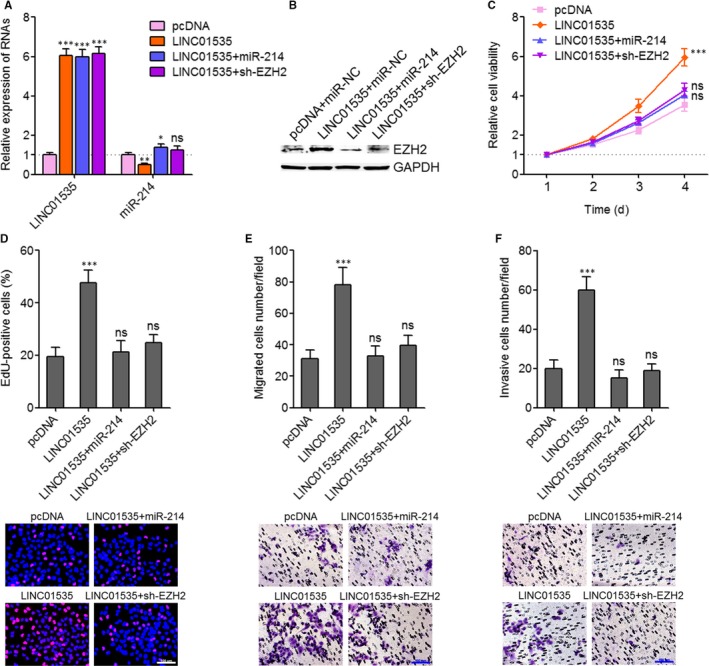Figure 5.

Activation of the miR‐214/EZH2 regulatory axis reverses the roles of LINC01535 on cervical cancer cell growth, migration and invasion. A, LINC01535 and miR‐214 expression in LINC01535 and miR‐214 concurrently overexpressed, LINC01535 overexpressed and concurrently EZH2 silenced, and control HeLa cells was detected by qRT‐PCR. B, EZH2 protein expression in LINC01535 and miR‐214 concurrently overexpressed, LINC01535 overexpressed and concurrently EZH2 silenced, and control HeLa cells was detected by wWestern blot. C, Cell viabilities of LINC01535 and miR‐214 concurrently overexpressed, LINC01535 overexpressed and concurrently EZH2 silenced, and control HeLa cells were evaluated by Glo cell viability assay. D, Cell growth of LINC01535 and miR‐214 concurrently overexpressed, LINC01535 overexpressed and concurrently EZH2 silenced, and control HeLa cells was evaluated by ethynyl deoxyuridine staining. Scale bars, 100 µm. E, Cell migration of LINC01535 and miR‐214 concurrently overexpressed, LINC01535 overexpressed and concurrently EZH2 silenced, and control HeLa cells was evaluated by transwell migration assays. Scale bars, 100 µm. F, Cell invasion of LINC01535 and miR‐214 concurrently overexpressed, LINC01535 overexpressed and concurrently EZH2 silenced, and control HeLa cells was evaluated by transwell invasion assays. Scale bars, 100 µm. Results are shown as mean ± SD of three independent experiments. *P < 0.05, **P < 0.01, ***P < 0.001, ns, not significant, by one‐way ANOVA followed by Dunnett's multiple comparison test
